For many of you, the carving fork only comes out at Thanksgiving as an essential turkey-slicing aid. Perhaps you pull it out of the knife block to slice up the occasional roast. But the carving fork (also known as kitchen fork) can be used for many more tasks around the kitchen, and some of the more unusual involve your favorite shellfish.
Here are step-by-step instructions for how to use a carving fork instead of a sea sheller to remove the meat from crab legs and lobster claws, and to devein shrimp. I've also included a 'taste' of what I made with all of this extra seafood after the tutorials below.
Tools Needed
First, in order to accomplish these tasks, the carving fork needs a little help from its friends the mallet, the cleaver, and the kitchen shears.
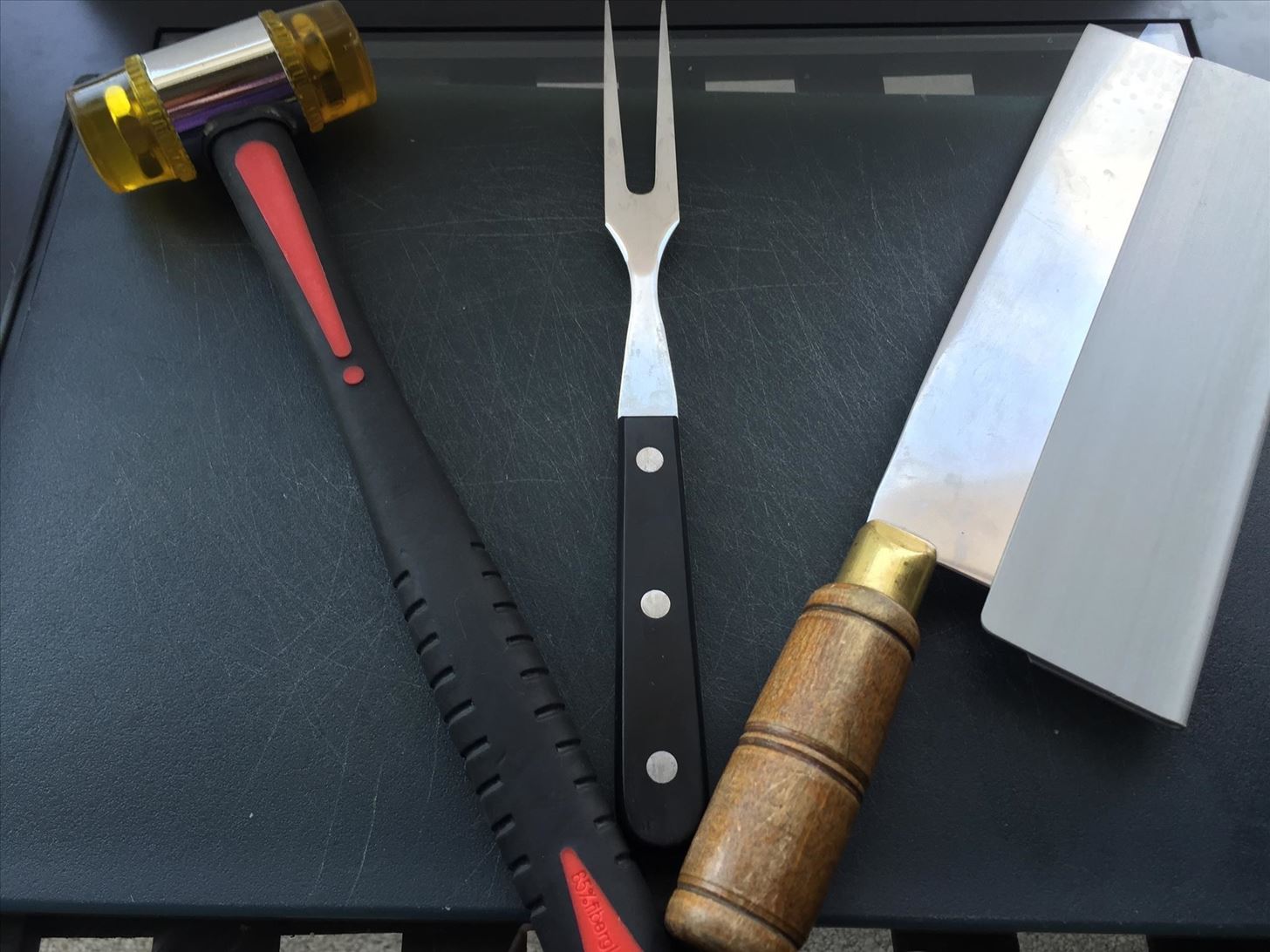
This already looks like it's going to be fun!
Crab Legs
Crab legs are the highlight of any seafood buffet and a special treat at home—especially when they're in-season. Avoid the (literal) pain of tearing these bad boys open with your handy carving fork.
Step 1: Breaking Bad
Break the crab leg at the joints, using both hands and either wrapping the leg in a dish towel or wearing gloves to protect your hands. If the joints don't break easily, bend them back and forth or use the mallet or the back of the cleaver to give them a gentle whack. Once you break the joints, you will notice that there are pieces of cartilage that extend from the sections of crab leg; you can cut those off with the scissors or just pull them out with the crabmeat.

Step 2: Get the Meat Out
Using the kitchen shears, cut carefully through one side of the shell on each of the three larger pieces of crab. Then, insert one of the tines of the carving fork into the slit you've created and use it to open up the shell (you may need to use your fingers to help hold it open). Use the tines of the fork to pull out all the crabmeat.

Step 3: Get More Meat Out
Insert one of the tines of the carving fork into the smallest piece of the leg (the tip) and wiggle it around until the meat is loose. Bracing the piece of crab in your hand, scrape and pull the meat out with the fork. If any small pieces remain, you can use a toothpick to get them out as desired.

Lobster Claw
If crab legs are a special treat, then lobster claws are a special occasion all on their own. Thanks to the carving fork, you no longer have to wrestle with these giant pincers (or send shell pieces flying every which way).
Step 1: Break It Down
Remember the bending back-and-forth motion used to break the crab leg? You're going to utilize the same technique to break the knuckle off the lobster claw. I recommend wearing gloves or wrapping the claw in a dish towel so you don't hurt your hands.
Then, use the same method to break off the pincher from the rest of the claw. If it won't come off easily when pulling with both your hands, give it a few gentle whacks with the back of the cleaver or the mallet.

Step 2: Cracking Up
Wrap the largest part of the claw in a dish towel and give it a few gentle whacks with the mallet or the back of the cleaver. Some lobster claws will come with a "starter crack" in them; use this as your starting point.
Check your progress once in a while to make sure that you're cracking the shell and not shattering it; this will save you from having to pick out minuscule pieces of lobster shell later.

Step 3: We Meat Again
Stick the tines of the carving fork into the smaller opening in the shell of the large piece of claw and gently push. If the meat won't easily push out, stick the fork into the large end and pull gently, but know that this may result in not having a beautifully unbroken piece of claw meat. Remove the piece of cartilage from the center of the meat.
Use the tines of the carving fork in the same way to pull the meat out of the other two pieces of the lobster claw. Since it is less important to preserve the integrity of these pieces of lobster meat, you don't have to be as careful.

Shrimp
We've already touched upon how to devein and peel shrimp in the past, but using a carving fork is just as easy.
Step 1: Shell Game
Using the kitchen shears carefully cut through the shell down the back of the shrimp. Pull the shell off, leaving the tail intact as desired.

Step 2: You're So Vein
Insert the tip of one tine of the carving fork right underneath the "vein" and gently slide it along to remove the vein. Rinse the shrimp to make sure the contents of the vein is gone (since it can easily break while being removed).

Putting It All Together
I decided to use all of the lovely shellfish I had worked so hard on with the fresh pappardelle and basil I got at the farmer's market to make a creamy pasta dish. This recipe from the Maine Lobster Marketing Collaborative was my base, but I doubled the recipe and added in the crabmeat and diced-up shrimp. (Don't forget to toss the pasta in its sauce right before serving to double up on the tasty factor.)

I also used a mix of sherry and dry Vermouth rather than the Chardonnay, since sherry is a wonderful complement to shellfish.
The dish was delicious—but the work I put into extracting the meat made it all the sweeter.

Other Uses for the Carving Fork
The carving fork has quite a few other non-carving uses. It's the perfect implement to make lovely twirled pasta (use a ladle or spoon to twirl it against), as well as a great substitute lemon reamer when you need lemon juice.
The carving fork can also be used to poke holes in meat to allow marinade to more fully permeate, and can serve a similar function if you are glazing a cake and want the glaze to saturate the interior.
Do you have any off-book uses for the carving fork? Please share them with us in the comments below!
If you liked this article, follow us on Facebook, Twitter, or Instagram!
More Excellent Seafood Hacks:
Just updated your iPhone? You'll find new emoji, enhanced security, podcast transcripts, Apple Cash virtual numbers, and other useful features. There are even new additions hidden within Safari. Find out what's new and changed on your iPhone with the iOS 17.4 update.
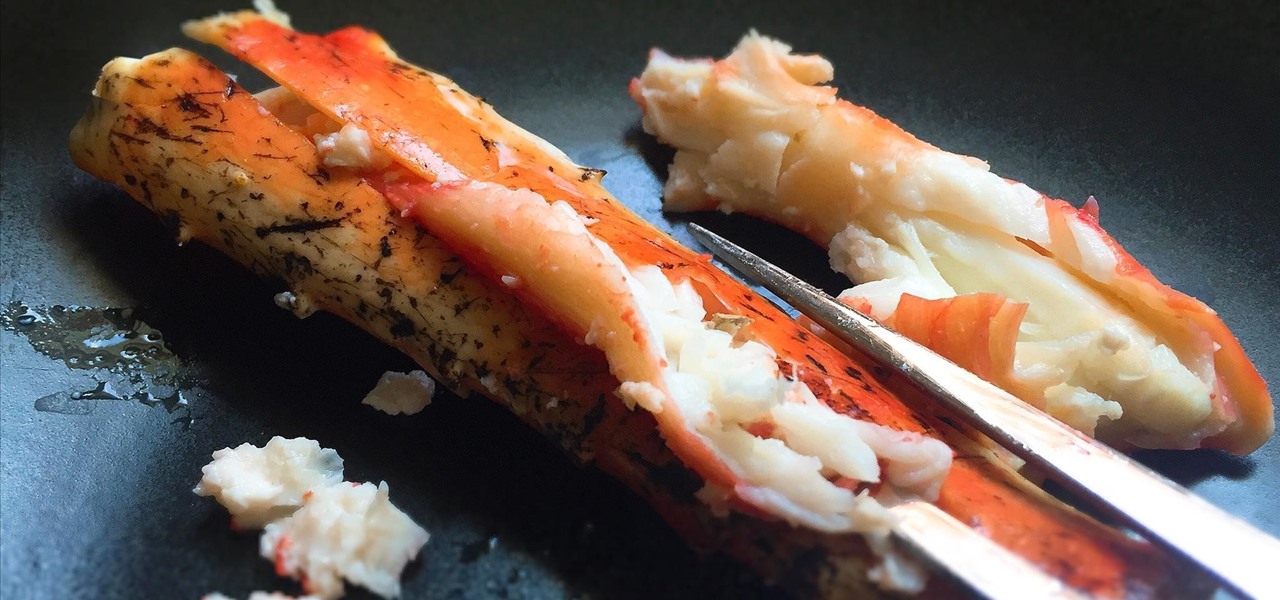










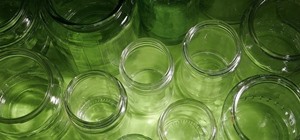
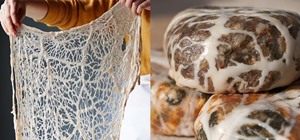
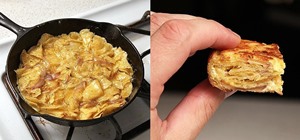





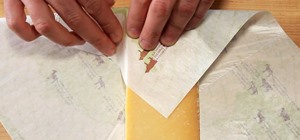

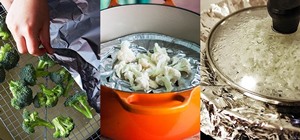
Be the First to Comment
Share Your Thoughts